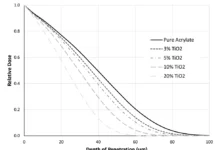By Callie Higgins, NIST
With the rapid advancement and adoption of vat photopolymerization (VPP) as an additive manufacturing (AM) technology, it naturally follows that discussions regarding the need for standards on how to safely and effectively implement VPP are increasing in frequency.
In answer to this need, a team of VPP experts ranging from resin formulators and OEMs to academic and government researchers have been putting together the first-ever ASTM VPP design guide for the last year and a half. This guide is intended to aid stakeholders who are interested in VPP and who would like to understand the current state of this technology with general guidance on what one should consider when adopting this type of AM.
To quote the premise of the guide document, which is quite telling and informative: “This document intends to provide support to technology users, such as design and production engineers, technicians and manufacturing engineers, among others, when designing parts that can be manufactured by means of VPP. This guide can inform practitioners of the benefits of VPP processes and to recognize the process-related limitations when designing parts.”
From providing a terminology rolodex, an important contribution given the vast and broad range of terms used to describe different approaches to this type of AM, to in-depth discussions on design considerations, this guide addresses the most essential considerations when using this manufacturing process. A few of these considerations include how the chosen photopolymerization light source interacts with the resin to produce a final part, namely overcure and print-through, as demonstrated in the representative Image 1.

These considerations are critical as they inform not only the lateral fidelity of a given part, but also the mechanical and chemical properties as well, which serve to highlight the importance of this guide. Additional important considerations are taken into account and addressed in the guide, including application areas (e.g., healthcare, sporting goods, etc.), the range of types of VPP (e.g., stereolithography, digital light processing, etc.) and example resin components with their expected properties (e.g., [X]-acrylates, [X]-methacrylates, etc.).
While the guide is in its final draft stage and publication is forthcoming, all interested in learning more about the guide or future contributions should contact Callie Higgins,
callie.higgins@nist.gov.






